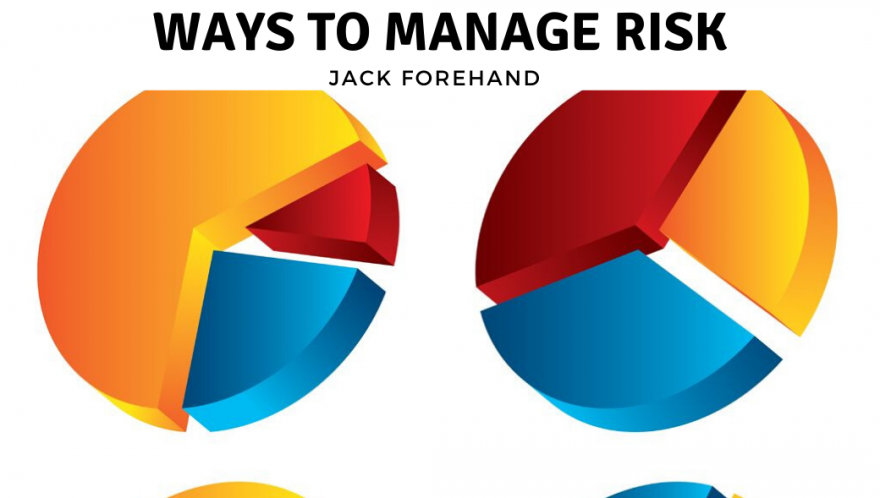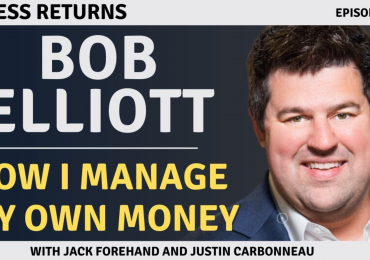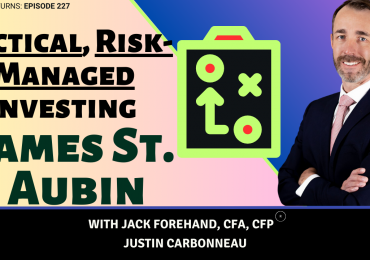The 60/40 portfolio gets a bad rap. It seems like there is a new article or study every week talking about its weaknesses or outlining why it no longer makes sense in the current market environment. But despite all of this, it has just kept rolling along and doing exactly what it is supposed to do. Even with bond yields at very low absolute levels coming into this crisis and many experts predicting that bonds wouldn’t be able to offer the protection in the next crisis that they have in the past, they have once again done their job. Despite the simplicity of the 60/40 portfolio, it is very difficult to find many things that offer a better combination of generating returns and managing risk.
Now that I have sung the praises of the 60/40 portfolio and criticized those who denigrate it, there is only one thing left for me to do; criticize it myself.
I’m obviously joking because I am a big fan of the 60/40, but there are some interesting other options out there, and I thought now would be a good time to take a look at some of them and how they have held up during the recent market crisis. Obviously, this is just one bear market, and what any strategy did during it is not necessarily indicative of what it will do in others, but I always find it interesting to see how strategies intended to manage risk hold up when the risk actually comes.
Just one note before I start. Any returns I reference here are from our tracking of the strategies on Validea. They are not money management returns. They do not include trading costs. They are included solely as a way to look at how model portfolios that follow these strategies held up in the recent decline.
With that out of the way, here are some interesting risk management strategies we track and some of the pros and cons of each.
60/40 Portfolio
Strengths: As I mentioned before, the 60/40 portfolio has been battle-tested over very long periods of time. And for the most part, it has held up very well. Bonds work well as a complement to stocks for two main reasons: (1) They produce consistent income and (2) They have historically acted as an excellent hedge during deflationary events. There is a reason blending stocks and bonds together to build portfolios is so widespread: it works. Additionally, the 60/40 portfolio is very simple and involves exposure to only two asset classes (stocks and bonds).
Weaknesses: There are some drawbacks to using bonds to hedge the risk of a portfolio of stocks. The main one is often forgotten these days because it hasn’t been an issue in such a long time. That drawback is that bonds typically don’t perform well during periods of inflation. I am not one of those people who will keep predicting inflation until it finally comes, but it certainly could come at some point given the amount of stimulus currently being applied to the economy, and if it does, other risk management techniques to complement bonds may be useful for some investors. The other issue with bonds right now is that yields have fallen so much that the income they produce is minimal, and the room yields have to fall during the next economic shock is also small (depending on how realistic you think negative
Peak to Trough Performance in 2020 Bear Market: -21.0%
With the S&P 500 was down 34% from the February 18th peak to the March 21st low, the Barclay’s Aggregate Bond Index was down just over 1%. As they usually do during deflationary shocks, bonds helped to significantly reduce the drawdown of an all stock portfolio.
Permanent Portfolio
The Permanent Portfolio was developed by Harry Browne as a method of trying to produce consistent returns in varying types of economic environments. It typically holds 25% of its assets in stocks, 25% in long-term bonds, 25% in gold, and 25% in short-term bonds.
Strengths: The Permanent Portfolio has two characteristics that can help it outperform a 60/40 portfolio in major drawdowns. The first is that is only has a 25% exposure to equities and has a much larger exposure to assets that typically outperform stocks during drawdowns. The second is that its significant exposure to gold allows it to be much better protected from inflationary shocks. If your primary goal is to reduce risk in major bear markets, the Permanent Portfolio can be an interesting option since it includes positions to hedge all the major bear market types. Since its inception in 1983, the Permanent Portfolio Mutual Fund’s maximum loss in a single calendar year is only 13%, and this was during a period with two 40% plus loss bear markets in 2000 and 2008 and another 35% plus one in 2020. This portfolio is also relatively simple, consisting of four asset classes that can be easily deployed with low-cost ETFs and mutual funds.
Weaknesses: Since equities outperform both bonds and gold over the long-term, holding only 25% of a portfolio in them is likely to be a drag on returns over time. And it has been exactly that historically, as the Permanent Portfolio Fund has returned about half the S&P 500 since its inception. So the price investors have paid for its ability to manage drawdowns has been a significant one from a long-term return perspective.
Peak to Trough Performance in 2020 Bear Market: -6.1%
Protective Asset Allocation
Protective Asset Allocation, which was developed by Keller and Keuning, is a more complex system than the others above. Its goal is to use momentum to invest in asset classes that are going up and to avoid those that are not. The portfolio uses ETFs to invest
Strengths: There are several advantages to this type of approach. First, it has been tested over a long period of time and has been very successful. In their paper, Keller and Keuning tested the strategy back to 1970 and found that it had superior raw and risk-adjusted returns relative to a 60/40 portfolio. Second, by rotating among asset classes based on momentum, this model doesn’t require any prediction regarding the future. It is agnostic to different economic environments and will follow whatever is working without trying to predict why it is working or when regimes will change.
Weaknesses: Just like they do in stock investing, momentum strategies can struggle in rotating among asset classes during significant reversals in the market. For example, in our testing, this portfolio was down slightly in 2009, while the S&P 500 was up 26% and the 60/40 portfolio was up 17%. This approach also involves significantly more trading than a 60/40 portfolio so it will incur more trading costs and is not tax efficient.
Peak to Trough Performance in 2020 Bear Market: -12.0%
Generalized Protective Momentum
Generalized Protective Momentum was also developed by Keller and Keuning. It is very similar to Protective Asset Allocation. The one major difference between the two is that Generalized Protective Momentum takes the correlation between asset classes into account when selecting them in addition to their momentum.
Strengths: By considering correlation in addition to momentum, this approach tends to offer smoother returns over time than Protective Asset Allocation. The correlation component will make it more likely to invest in assets that are uncorrelated with the others in the selection universe. For example, going into this crisis, stocks had been the best performing asset class in the previous year, but gold and long-term government bonds had also performed well. Due to the correlation component of this portfolio, it had significant positions in both of those asset classes prior to the crisis, which allowed it to produce a positive return during it, despite the market losing over 30%.
Weaknesses: This portfolio struggles with the same issues related to its use of momentum and tax efficiency as Protective Asset Allocation does. The correlation component can also lead it to underperform during periods where stocks are outperforming all other asset classes and certain types of stocks (for example US stocks) are beating all others by a wide margin since its diversification will be a drag on returns.
Peak to Trough Performance in 2020 Bear Market: +7.0%
Risk Can be Transformed, But Not Destroyed
These are only a few of the many risk management strategies out there, but I think they are interesting because they are both supported by long-term data, and are systematic in nature and remove emotion from the process. If there is one thing that all strategies like this have in common, it’s that investors tend to want to utilize them after the risk they are protecting from has already shown itself. For example, the Permanent Portfolio had massive inflows after getting through the Great Financial Crisis relatively unscathed, and it then went on to underperform by a wide margin during the bull market that followed. When you utilize an approach like these to limit market risk, you typically end up trading that risk for another one. That other risk could be substantial underperformance during a bull market. Or it could be the risk of being whipsawed during market volatility. But either way, risk management is like everything else in investing – if you can’t stay the course during the periods it doesn’t work, you will never see the benefits during the times it does.

Jack Forehand is Co-Founder and President at Validea Capital. He is also a partner at Validea.com and co-authored “The Guru Investor: How to Beat the Market Using History’s Best Investment Strategies”. Jack holds the Chartered Financial Analyst designation from the CFA Institute. Follow him on Twitter at @practicalquant.









